|
Supersonic Transport -- SST The Concorde and Soviet Tu-144 1969 - ... Supersonic Transport (SST) refers to those aircraft which transport passengers and cargo at speeds greater than the speed of sound. After World War II three major United States jet airline manufacturers -- Boeing, Lockheed, and Douglas Aircraft -- began to dominate the world airliner markets with models like the Boeing-727 and Douglas DC-7. Jet transport combined with the good times of the fifties and sixties to produce a world-wide boom in airline travel which in turn produced an even greater demand for more jet airliners. The American jetliners were being sold world-wide as fast as they could be produced. U.S. commercial carriers of Transworld Airlines (TWA) and Pan-American (Pan-Am) dominated the international passenger markets with United Airlines, Eastern Airlines with other American carriers experiencing explosive growth. The only serious foreign competition was British Airways and Air France, both of which relied heavily on U.S. manufacturers for jet passenger planes. In fact, every nation was a prime customer for the American built jets. The purchase of expensive jets created a balance-of-payment deficit for countries trying to keep up with the American carrier fleet. This was especially troublesome in Europe where countries like Britian, France and Germany were struggling to regain world-class economies. These three countries finally decided to start their own jet airliner manufacturing consortium to compete with the American companies. However, once a tentative understanding had been reached, a debate soon emerged over the type of jetliner needed for the future -- big or fast. The lines for debate were pretty clear based on technology: High speed, high altitude, supersonic planes could reduce travel time and theoretically make more round trips; versus subsonic, bigger planes which could carry more people per trip.
Boeing and the other American manufacturers decided to go with the "wide body" concept of wider, longer aircraft traveling at subsonic speeds. The European consortium opted for the SST's. Germany did not agree with the French and British and pulled out of the consortium to establish their own "Airbus" company. The race was on. In 1969 the French-British partnership produced the Concorde and began test flights. Meanwhile, the USSR had quietly been building their own version of an SST, the Tu-144. Chronological History of Supersonic Flight
1960 - B-58 Hustler. Capable of flying at a maximum speed of 1,385 mph at 40,000 feet, the B-58 was the first supersonic, trans-continental bomber in the world. The last B-58 was decomissioned in 1970. 1962 - Birth of Concorde. French and British aerospace engineers agree to pool efforts at creating a supersonic transport.
July 1, 1965 - SST. President Lyndon Johnson announces that the American effort to build a supersonic jet, dubbed the SST, would go ahead. (see Boeing SST above.)
Feb. 7, 1969 - SST stalled. After repeated delays and with political opposition building over environmental concerns, President Richard M. Nixon orders the creation of a special committee to examine every feature of the SST program.
March, 1971 - SST death knell. Environmental concerns surrounding the supersonic transport persuaded Congress to stop funding for the SST. In May, the House sought to revive the program; however, the Senate rebuffed the move. At the end of May, 1971, Nixon signed a bill effectively killing the American SST program.
The Concorde Since the Concorde fleet went into service they have been limited to airports such as New York's JFK and an occasional landing at Dulles near Washington. Early experimental flights were made to Houston, Texas but proved uneconomical. Both Air France and British Airways operate the Concorde to other countries world wide. From the beginning, the Concorde has experienced problems, especially with tires which frequently blow out on both takeoffs and landings. This has been a potential hazard because of the close proximity of the landing gear to the engines and because the fuel tanks of the Concorde are scattered throughout the aircraft including the interior of the wings, providing multiple targets for flying debris. Compounding this is the engine configuration, two on each side, encased two engines in a single pod, with only a sheet of steel between them. Although the Concorde can safely operate with three engines, a catastrophic failure in one engine could potential take out the other engine in that same pod creating a severe imbalance of thrust and power. Despite the inherent risk built into the design of the Concorde, it has run up an impressive safety record, operating for 24 years without a fatality, until July 25, 2000. On this day a chartered Concorde, attempting to depart the Charles De Gaulle Airport near Paris, France, crashed into a hotel in the town of Gonesse, killing all 109 people on board and five people in the hotel. It was one of only 13 such planes in the world. The fleet, which entered commercial service almost a quarter-century ago, is the creme de la creme of the aviation world. But the planes are also showing their age. The Concordes fly at 55,000 feet and reach cruising speeds of 1350 MPH -- Mach 2 -- or twice the speed of sound of 1130 feet per second. The seats aren’t cheap: Round-trip trans-Atlantic fares can range higher than $9,000, although even on the Concorde you can find discounts. Usually, however, the Concorde’s passengers are looking for speed, not economy. The craft holds a number of world records, including the fastest New York-to-London crossing at 2 hours, 54 minutes and 45 seconds. A more typical Concorde flight lasts 3 hours and 40 minutes, compared with the traditional crossing time of more than 7 hours. Because of the speed and the cost, the Concorde has become a status symbol for jetsetters flying across the Atlantic or taking a “flight to nowhere” during solar eclipses or the turn of the millennium. But because of its fuel-guzzling turbojet engines and its limited passenger capacity (about 100), the Concorde is also something of a dead end in aviation: No new planes are being built, and the fleet’s average age is 21 years. Air France says its Concordes should be flightworthy until 2007. The planes have clocked up more than 127,000 flying hours, with more than 100,000 of those at supersonic speeds. |
All rights reserved. For details and contact information: See License Agreement, Copyright Notice. |
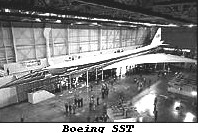 Manufacturers developed plans and studied world markets with mixed results. Boeing and the Europeans began development of prototype SST's. However, environmental concerns soon entered the fray. The supersonic planes would have to cruise at altitudes above 50,000 feet, would be less fuel efficient, and produce more noise. The high altitude and noise drew the most attention. Jet exhaust released into the atmosphere on the edge of outer-space (above 50,000 feet) would linger for years and have a severe negative effect on the ozone layer. Noise "pollution" from the more powerful engines and the "sonic booms" created when the planes passed from subsonic to supersonic speeds drew public attention. It soon became evident that operational restrictions would be placed on the aircraft, requiring pilots to slow air speed to subsonic levels over land and consequently, limiting airport access to coastal cities.
Manufacturers developed plans and studied world markets with mixed results. Boeing and the Europeans began development of prototype SST's. However, environmental concerns soon entered the fray. The supersonic planes would have to cruise at altitudes above 50,000 feet, would be less fuel efficient, and produce more noise. The high altitude and noise drew the most attention. Jet exhaust released into the atmosphere on the edge of outer-space (above 50,000 feet) would linger for years and have a severe negative effect on the ozone layer. Noise "pollution" from the more powerful engines and the "sonic booms" created when the planes passed from subsonic to supersonic speeds drew public attention. It soon became evident that operational restrictions would be placed on the aircraft, requiring pilots to slow air speed to subsonic levels over land and consequently, limiting airport access to coastal cities.
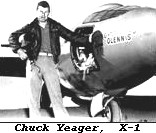 October 14, 1947 - The world heard the first "sonic boom" as Captain Charles "Chuck" Yeager (retired as a general), WWII Air Force ace and famed test pilot, became the first pilot to break the "sound barrier." Prior to this flight, some experts theorized that the so-called "sound barrier" (flight faster than the speed of sound) could not be broken. Yeager, perhaps the greatest test pilot in history, piloted a Bell X-1 aircraft, launched from a bomber at 21,000 feet, and throttled the plane up to 700 mph, becoming the first person to exceed the speed of sound (Mach 1) and encounter a sonic boom.
October 14, 1947 - The world heard the first "sonic boom" as Captain Charles "Chuck" Yeager (retired as a general), WWII Air Force ace and famed test pilot, became the first pilot to break the "sound barrier." Prior to this flight, some experts theorized that the so-called "sound barrier" (flight faster than the speed of sound) could not be broken. Yeager, perhaps the greatest test pilot in history, piloted a Bell X-1 aircraft, launched from a bomber at 21,000 feet, and throttled the plane up to 700 mph, becoming the first person to exceed the speed of sound (Mach 1) and encounter a sonic boom.
 Early 1964 - Supersonic spy. Secretly, the U.S. Central Intelligence Agency begins testing the SR-71 Blackbird in spy missions over the Soviet Union. The plane remains the fastest ever deployed and was capable of cruising at Mach 3. It began operations in 1968.
Early 1964 - Supersonic spy. Secretly, the U.S. Central Intelligence Agency begins testing the SR-71 Blackbird in spy missions over the Soviet Union. The plane remains the fastest ever deployed and was capable of cruising at Mach 3. It began operations in 1968.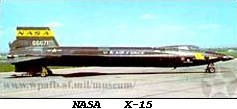 Oct. 3, 1967 - Record speed. The X-15, a successor of the X-1 that broke the sound barrier back in 1947, flies at Mach 6.7 (4,354 mph) in what remains a world record.
Oct. 3, 1967 - Record speed. The X-15, a successor of the X-1 that broke the sound barrier back in 1947, flies at Mach 6.7 (4,354 mph) in what remains a world record.
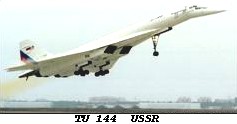 Dec. 31, 1968 - Soviet SST. A prototype of the Tupolev Tu-144, which became the world's first supersonic transport, is tested. The Tu-144 never went into extended production and it was later learned it had severe stability problems. In a public display of the Tu-144 at a Paris air show in 1973, the demonstration model crashed and the crew was killed.
Dec. 31, 1968 - Soviet SST. A prototype of the Tupolev Tu-144, which became the world's first supersonic transport, is tested. The Tu-144 never went into extended production and it was later learned it had severe stability problems. In a public display of the Tu-144 at a Paris air show in 1973, the demonstration model crashed and the crew was killed. March 1969 - Concorde flies. Concorde 001 first flight, in Toulouse France, piloted by Andre Turcat. The jet made its first supersonic flight later the same year.
March 1969 - Concorde flies. Concorde 001 first flight, in Toulouse France, piloted by Andre Turcat. The jet made its first supersonic flight later the same year.
 Jan. 21 1976 - Concorde operational. The first commercial flight on Concorde takes off from London's Heathrow airport for Bahrain. British Airways' round trip fare: $1,015. Air France launched its Paris-Dakar-Rio route later in the month. In November 1977, Air France begins service between Paris and New York.
Jan. 21 1976 - Concorde operational. The first commercial flight on Concorde takes off from London's Heathrow airport for Bahrain. British Airways' round trip fare: $1,015. Air France launched its Paris-Dakar-Rio route later in the month. In November 1977, Air France begins service between Paris and New York.
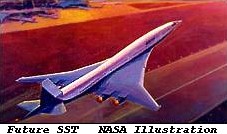 Dec. 1995 - A new generation SST. NASA begins project aimed at assessing a new generation SST. Among the assumptions - the new jet, dubbed High-Speed Civil Transport (HSCT), would carry 300 passengers at more than 1,500 miles per hour and overcome environmental problems of noise and pollution. Additionally, with computer assisted design, an extensive evaluation can be made without actually building a prototype.
Dec. 1995 - A new generation SST. NASA begins project aimed at assessing a new generation SST. Among the assumptions - the new jet, dubbed High-Speed Civil Transport (HSCT), would carry 300 passengers at more than 1,500 miles per hour and overcome environmental problems of noise and pollution. Additionally, with computer assisted design, an extensive evaluation can be made without actually building a prototype.